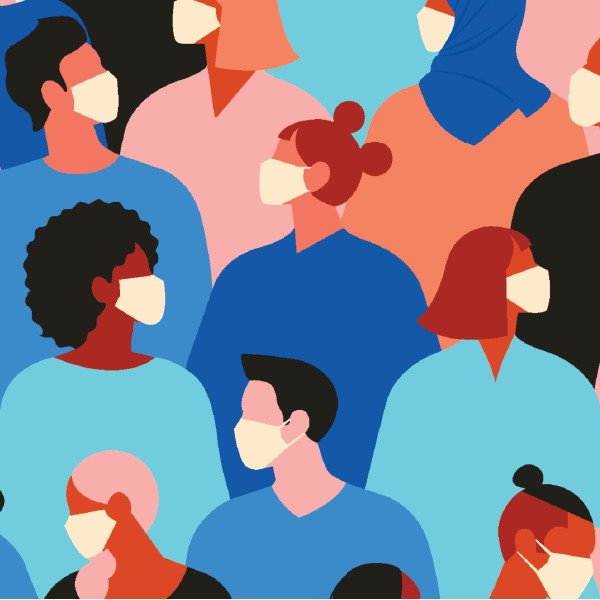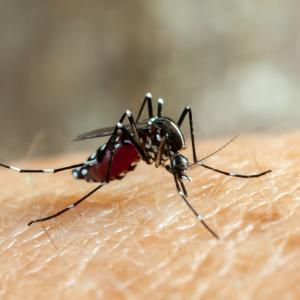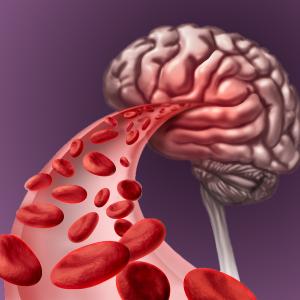Dr. Anna Nápoles — A New Dawn for Minority Health

When the COVID-19 pandemic struck, racial and ethnic minority groups were disproportionately hit. Those health inequities pulled at the seams of a system that was already frayed. Dr. Anna Nápoles works to close gaps in healthcare as the first Latina scientific director of the National Institute on Minority Health and Health Disparities (NIMHD). She is reducing the types of hurdles that once hindered her parents so that all populations can live long, healthy, and productive lives.
Categories:
Diversity Health disparities Epidemiology
Transcript
>> Diego (narration): Thanks for tuning into Speaking of Science, the podcast that features the scientists behind the biomedical research taking place in the Intramural Research Program of the National Institutes of Health. I’m your host Diego Arenas and for this episode I was interested in exploring the health inequalities facing minority populations. Let me start with some pretty daunting facts.
According to the CDC, Latino adults are 45% more likely to die from diabetes. Asian Americans and Pacific Islanders account for more than 50% of all Americans living with chronic Hepatitis B which can lead to an increased risk for liver cancer. And nationally, African American men live seven years less than other racial groups.
These are just a few examples that reflect ongoing health inequities in the U.S. Add to that a pandemic, and the burden of disease shifts the same way. At the height of reported cases, racial and ethnic minority groups experienced disproportionate rates of COVID-19 infection, hospitalization and death.
When vaccines started to roll out, communities of color were once again shortchanged.
>> Clip from newscast 1: Federal officials are concerned about racial disparities when it comes to who is getting the COVID vaccine.
>> Clip from newscast 2: White Americans are getting COVID vaccines at significantly higher rates than Black Americans.
>> Clip from newscast 3: Black and Hispanic Americans, often essential workers, are finding themselves underserved.
>> Diego (narration): In March, the New York Times reported that the vaccination rate for Black people in the U.S. was half of that of white people. And even now, available federal data, shows that less than a quarter of Black Americans have received their first COVID-19 shot.
>> Clip from newscast 4: …since, the rate of vaccination of Black people has increased, but in recent weeks flattened out.
>> Diego (narration): With all of this in mind, it’s hard to argue that gaps in healthcare don’t exist. But the obstacles to close those gaps and provide equal access vary. Limited infrastructure, language differences, discrimination, and medical mistrust— these are just a few threats to health disparity populations. And just like those threats can’t be treated the same, neither can the communities that bear the brunt of those inequalities.
The term – “health disparity population”— is pretty broad. One that not only includes people of color, but also sexual and gender minorities, socioeconomically disadvantaged groups and underserved rural populations. The National Institute on Minority Health and Health Disparities, NIMHD, is dedicated to enhancing equal opportunity so that all populations can live long, healthy, and productive lives.
2020 coincided with NIMHD’s 10-year anniversary as an institute at the NIH. And in light of new inequities that pulled at the seams of a system that was already frayed, it seems that the work at NIMHD is more important than ever before. I wanted to learn more about their efforts, so I sat down with Dr. Anna Nápoles, a senior investigator and the institute’s scientific director.
Dr. Nápoles has centered her career around creating, implementing and improving interventions to advance health equity. A second-generation immigrant herself, Dr. Nápoles spoke to me about her parent’s struggles to acquire adequate healthcare during her childhood and how her work is now reducing similar hurdles for families like hers and others from underrepresented groups.
>> Diego (interview): So, Dr. Nápoles, I really wanted to talk to you today because now that we're kind of seeing the light at the end of the tunnel that has been the COVID pandemic, we're kind of left to grapple with many of the health disparities that it has both exposed and exacerbated, but these inequalities have been in place long before 2020. So, I guess my first question is how does the work you do as a senior investigator and Director of NIMHD contribute to addressing those gaps in healthcare?
>> Dr. Nápoles: Sure. Within the intramural program, which is a program I direct at NIMHD, we're completely focused on population health, sociobehavioral and in some cases molecular epidemiology to try to solve some of the issues that disproportionately face those populations in the U.S. that are vulnerable. And for us that focuses on racial/ethnic minorities, sexual and gender minorities, and rural populations. We know that these disparities are evident because of social determinants and structural racism and experiences of discrimination and socioeconomic disadvantage and it's this lack of access to resources in an equitable fashion that have been around for many, many years that we're starting to see, you know, as evident in terms of these disparities in COVID and other chronic diseases.
>> Diego (interview): Right. And I guess it's more and more evident and undeniable that what you're saying is true, that social adversity does in fact affect human biology. And I’d say a lot of people feel like that adversity's kind of inescapable but I know that there are evidence-based interventions, strategies, programs that are known to work. Can you give me examples of some of them?
>> Dr. Nápoles: Sure. One of the projects that NIMHD is doing is called HDPulse which collects a lot of information on just that, on emerging interventions and the science and those that are more established in terms of evidence-based interventions. So, for example, a lot of the work that I've done has been in addressing disparities in cancer survivorship among underserved populations. So, we go to the literature, we get an evidence-based intervention and then we adapt it for populations because that's an underlying issue, is a lot of the behavioral interventions, which is what we tend to focus on, have been only tested in either higher income populations or non-minority populations. So there's a huge task involved in building the evidence base for how we need to adapt those programs to make them salient for disparate communities which have to occur at the local level with advocacy as well as funding and support from government and the private sector.
>> Diego (interview): Right. It's not a one-size-fits-all. Just because different groups of people kind of fall under the category of being a minority, it doesn't mean that they all face the same issues and that the solutions that their communities require should be the same. Following up on that, you created the transcreation framework to help healthcare workers design and develop programs that fit those needs and resources for a specific community. Can you tell me more about that framework?
>> Dr. Nápoles: Sure. So my history was that I had been doing a community-based project that was really focused on promoting cancer screening in the underserved Latino community in the San Francisco Bay Area. And out of those efforts, working with a lot of these community partners, I learned that there was really nothing for these underserved communities once they were diagnosed with cancer, and so I think that model, what's so important about it is it's really rooted in community needs. It's really a mutual relationship where you do all the groundwork to get the community input from the start on how you would modify a program, an intervention, to reduce the targeted disparity that you've agreed upon. And then the rest is just a really an iterative process where you're looking at the scientific evidence, getting evidence from the community, which means interviewing community people that are effected by the targeted disparity as well as the organizations and looking at social capital, you know, what's available in terms of the structures and the organizations in the community that can be tapped to reduce this targeted disparity. And then you start co-developing a program. For us, that involved using community health workers from the organizations that we trained to do the recruitment and delivery of the intervention. And then, you know, we produced the data that showed that the program worked and then we tried to disseminate it other organizations. So it's a model that I think, you know, we drew obviously from other models, but it's a really practical public health, what we call translational, science program that really moves interventions that are evidence-based and combines them with community knowledge and assets and then to deliver the programs in a way that's not only effective but relevant for those communities.
>> Diego (interview): And I think a great example of this transcreation is the health management program that you helped develop geared towards Latino women with breast cancer. I think it was called Nueva Amanacer, meaning New Dawn. So how did that come about?
>> Dr. Nápoles: So when we were doing this community-based program to promote cancer screening one of the community organizations that was a lead organization that we were working with, said you know, we need to do something for cancer survivors and then we just started developing the program together. So, we've done multiple iterations of the program. I've done it in rural Latino settings, urban Latino communities. And so, it just came about by looking at the scientific evidence and there are these cognitive behavioral stress management programs that are used by cancer centers, these comprehensive cancer centers, to improve quality of life and reduce anxiety and depression in women after cancer, but none of those had been tested in non-white, you know, lower income, lower literacy, non-English-speaking populations, and so that need was what we identified and focused on. And then it was just working to do all the interviews to get community input on how we adapt those programs to make them relevant for those communities. So, it was a lot of back and forth. And then, you know, we did a couple of RCTs to make sure that randomized trials where ethically we waitlisted the control group. They received the program as well but had to wait for it, so we were able to demonstrate using rigorous scientific methods that the program worked.
>> Diego (interview): Right. And what did the intervention or the management program entail? Like, what did it look like?
>> Dr. Nápoles: So for Nueva Amanacer, what we did is we used these stress management techniques that are evidence-based called cognitive behavioral stress management. And so that involves not only reframing the psychology of how stress is impacting your life, so you reframe your thoughts from negative to positive, but there are also behavioral things you can do like distraction, like finding pleasant activities, like setting goals, deep breathing visualization techniques. All those are really evidence-based but it takes training people on how to use those skills. So, we trained peers, so Latina women in the community who had been through breast cancer were the ones that delivered the intervention, which was I think part of the reason why it was so effective, because there was that immediate bond, right? -- in terms of the shared experience and the culture and the language. And other pieces of that program were the one-on-one support that that person provided to the participant in the program. We also know that physical activity reduces the risk of recurrence of breast cancer and when we did the groundwork to develop the program, the participants wanted information on nutrition and physical activity and how to take care of themselves after cancer so that was also integrated into the program. So, it was a combination of the social support from the peer, the nutrition and physical activity education and the cognitive behavioral stress management techniques that I think were effective.
>> Diego (interview): Got you. And like you said before, to do all that in the first place you have to adapt to the community that you’re working with especially the language access part. Because I know, like for me growing up with, you know, Spanish-speaking relatives and you know, English not being their first language, they did face many like difficulties in regard to healthcare and otherwise because of that simple fact. And I imagine you can relate being the child of immigrants from Jalisco, Mexico.
>> Dr. Nápoles: Exactly. You know, it's something I grew up with that I was always the sort of liaison to make sure that my parents had access, one, to the healthcare system, and two, that they could understand what their physicians were telling them in terms of the self-management and whatever the recommendations were. And similarly, you know, what we found when we were doing a lot of the research to develop these interventions in the Latina women with breast cancer was that they had extremely high levels of depression and anxiety and a lot of it revolved on really not knowing what to expect once they were diagnosed, because most of the information they had received was in English. Most of it was of a high literacy level and really in language that they couldn't understand and it's hard enough for English-speakers sometimes with the medical jargon that physicians use to understand the significance of what their diagnosis is or what the plan is for self-management or their healthcare treatments. Imagine when you're, you know, when you don't have an advanced education, when you don't speak the language, what that experience is like, and that resulted in a lot of anxiety and depression and really kind of shutting off and really not asking for help when they needed it. So, our intervention was able to really, really understand those barriers and really approach them in a way that was culturally salient.
>> Diego (interview): Yeah, that makes sense. So, being kind of like your parents’ medical interpreter, did that influence the way you approached your career?
>> Dr. Nápoles: It definitely did. I think without my knowing, drove my strong interest in public health and it permeated the rest of my education. So, I was really focused on health disparities and really trying to increase access to equitable and fair treatment in terms of the healthcare system in a way that you are able to use the information. And so, for my parents, a lot of it was financial, not having access to health insurance for a large part of my childhood. And then the other piece is just not having the information and the resources you need to—even once you have access—to be able to implement some of the recommendations.
>> Diego (interview): Well, now you're the first Latina scientific director in NIH history, and I think it's important to note that we've been talking about disparities in delivering health care, but there's also issues of diversity and inclusion when it comes to the development of healthcare. So, how did you overcome those obstacles to, you know, be where you are now?
>> Dr. Nápoles: Persistence. Persistence is definitely key, and I think, you know, and just really seeking out quality mentors that understood your potential I think is really key. And I think for me it was –it really was—you’re faced with discrimination on many levels, and you're faced with situations where there's a lot of self-doubt and a lot of questioning about whether a path in science is really the right path for you. And it just takes those people saying no, you've got the potential, you've got the skills, you've got the intellect to pursue it. It really does take those people to help you along the way, and those for me have been not only minority but non-minority mentors that have been critical in my development and also in opening doors for me. And I think there's a lot in terms of that determination that opens doors in terms of fate and just meeting the right people at the right time as well, as you're reaching out and being assertive in seeking out those opportunities for yourself. And it's not always easy for minority folks. Like for example, Latinos; we're taught to be humble and it's a cultural trait that is viewed as something of value within our heritage and our culture and our values but that humility, you know, can work against us if we're not proactive in seeking out those opportunities in academic settings. Once you learn that that's really what makes a difference, it's such a critical element—is to not to be afraid to champion you own skills, your own potential, your own contributions. And so we do a lot of mentoring at NIHMD. I wish our intramural program was much larger, because we could do so much more. But there are so many capable racial, ethnic, and low-income groups of students that are out there that are excellent candidates for some of these leadership and tenure track positions and I just wish we had a better way of encouraging them early on. And I know there are a lot of programs that we fund and they're effective but you know, you always wish that you could do more,
>> Diego (interview): Yeah, no, I totally agree. It’s funny, mentorship is much like the interventions you implement; it’s a matter of advocating for yourself and putting in the work when opportunities present themselves, but also finding the right match in someone that can adapt and help address your specific goals or obstacles.
>> Dr. Nápoles: And I think a big part of the mentoring is also defining and refining your area of focus, right? For many trainees, I just feel that they don't know what a career in science means, what a career in public health means. People automatically jump to “I want to be a physician,” but there are so many other ways that you can have impact in terms of health. You know, what we do at NIH is incredible and we've seen that during COVID; the influence of basic and translational science and the influence of what we do on a population level in terms of epidemiology and understanding risk factors and how those are distributed across populations and what the potential mechanisms of those disparities is critical, and we've seen it all unveiled and really magnified in this area of a pandemic.
>> Diego (interview): Yeah, it has been tough, but I mean, it kind of gave people a new lease on life and hopefully it's a great opportunity to, you know, address these issues that have been, you know, prolonged for so long.
>> Dr. Nápoles: Right. This pandemic, I know it's highlighted these disparities and obviously the structural racism that has been around for centuries and is now drawing so much attention, but I really hope it drives societal change only in science and in healthcare, but more broadly and that that in and of itself hopefully will improve the health of all populations. I mean it's just so critical to not forget about these underlying conditions that have such a profound impact on the quality of life and wellbeing and health of underserved populations.
>> Diego (interview): Well, I think many of us can just take heart in knowing that people like you are working on that. So, I mean it's a little bit comforting in that sense.
>> Dr. Nápoles: And you as well. I really look to the next generation. I look at my children. I look at all the trainees and really it's in your hands to carry the work forward. And whatever we can do to help you and prepare you, that's wonderful and support those efforts.
>> Diego (interview): Yeah, definitely. Well, I guess my last question: I recently talked to Dr. Sherine El-Toukhy, who is another woman from an underrepresented group in science and who is also at NIHMD. And she's working to bridge the gap in minority healthcare using information technologies. I know that you're also developing tools like mobile apps to promote physical health in specifically Latino women, so would you say that's the future of minority health?
>> Dr. Nápoles: It is. I mean there's still a segment that either, you know, especially rural populations and older populations and more low-income who have a hard time paying for internet access that's reliable and high speed. Those are segments of the population we can't leave behind, but a large proportion of racial ethnically diverse populations relies on mobile phone technology for access to the internet and so we can't overlook texting. It's a tool that's been used in a lot of interventions that's been shown to be effective, and I think we have to make sure that that technology is equitably distributed as well as utilized in a way that fits that particular community, right? But in terms of dissemination potential, it's incredible the reach of those interventions. So, it is something that is definitely a wave of the future and something we are looking at within our research program to make accessible to these populations so they're not left behind.
>> Diego (interview): Gotcha. Well thank you so much for taking the time again. It was a pleasure.
>> Dr. Nápoles: It was a pleasure, and it was nice meeting you.
Related Episodes
This page was last updated on Tuesday, October 1, 2024






